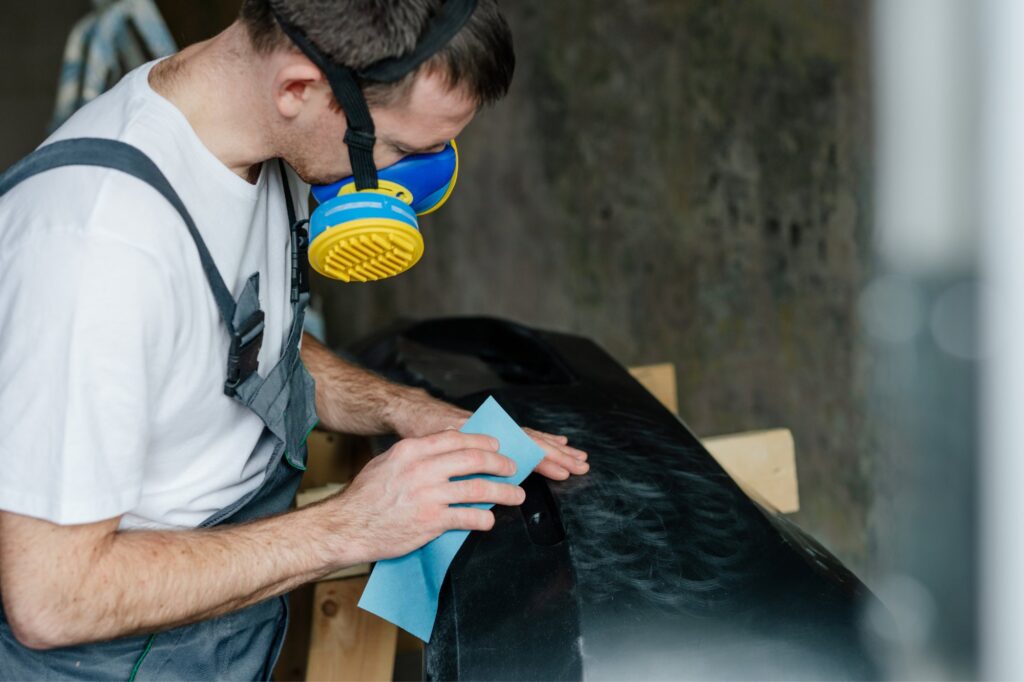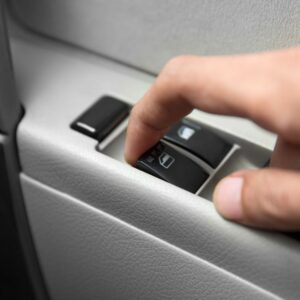While it is possible to fix some scratches and scrapes with a plastic bumper repair kit, some tasks are better left to the professionals. After all, professionals in auto body shops are trained to fix vehicles quickly and effectively. Even if it may cost more than doing it yourself, it’s much safer for a trained expert to fix a damaged bumper.
But how exactly are plastic bumpers repaired?
Inspect the Vehicle
Before any work is done, the shop will thoroughly inspect your vehicle. This is done to determine how much time and resources they’ll need to invest as well as how much work they’ll have to do overall.
Plastic bumper repair costs will vary depending on the severity of the damage.
Smaller scratches in isolated areas are typically much easier to deal with and cost significantly less to fix. On the other hand, some instances of deep damage might be impossible to repair and require a bumper replacement instead. Professionals will always tell drivers what they recommend before taking action.
It takes mechanics approximately three times longer to repair a bumper as opposed to replacing it. Because of this, it’s important to consider whether it’d be cheaper to replace the bumper entirely or go for repairs depending on the severity of the damage.
Prep the Bumper for Repairs

The plastic bumper is removed from the vehicle before the damaged area is scuffed to even out bumps and scrapes. After scuffing, the bumper is lathered with a plastic cleaner to remove any dust or dirt that might get in the way of repairs. Once the dirt is removed, it is wiped with prep solvent to remove oil, wax, grease, and silicone.
Grind a V-Shape
Some shops will use a sander with 80-grit paper to create a small, shallow V-shape on the damaged part on the front and back of the bumper. This V-shape is important because it helps remove loose, damaged material while providing adhesives with more foundation to latch onto.
In some cases, the sanded V-shape is filed down to make the surface smoother and more effective at retaining any adhesive applied to it. A coat of aerosol is then applied to cover the parts of the plastic that need mending.
Mend the Tears
Any tears are covered with repair tape and a plastic filling solution made from hardener and repair adhesive is applied over it. A squeegee may be used to smoothen out the adhesive and distribute it evenly across the bumper.
After the first layer of adhesive dries, sometimes a second layer will be added to give the mended tears some extra reinforcement.
After the solution hardens, the repair tape is removed and the bumper is sanded to match the contour of the original panel. Any dust is wiped off with a rag to guarantee that the bumper is clean and ready for priming.
Paint the Bumper
Once all excess plastic is removed and the bumper is sanded down, the surface of the bumper is primed. Primer allows the paint to stick to the vehicle, preventing it from getting scratched or scraped off easily. Two to three layers of primer are typically applied for maximum longevity.

Once the primer dries, the bumper is painted to make sure its color matches the vehicle. It’s always best to let an expert handle the finishing touches because automotive paint is toxic. Even inhaling paint particles can cause long-term lung complications and pulmonary problems.
After being left to dry overnight, the bumper is reattached to the vehicle. The vehicle is finally handed back to its owner.
How to Prevent A Newly Repaired Bumper From Getting Damaged
It will take some time for the paint on a newly repaired bumper to fully cure and harden. This can make the area extra vulnerable to scratches and chipping. Here are some things you can do to protect your vehicle’s fresh coat of paint:
Avoid Car Washes
It’s best to avoid drive-through car washes after getting your bumper repaired because the paint might not have fully dried and hardened yet. This means it’s susceptible to scratches and other forms of damage caused by the wiry brushes and cleaning solutions used in car washing facilities. It’s better to wash your vehicle by hand if you want to keep your newly repaired bumper intact.
Park Away From Sunlight
Ultraviolet rays from the sun are harmful to car paint. The fresh coat of paint on a newly repaired bumper is more likely to crack or become discolored. It’s recommended to park in shaded areas such as garages and covered parking lots.
Wait Before You Wax
Waxing your vehicle almost immediately after having your bumper repaired can cause complications, potentially even scratching the paint of the new bumper. It’s a good idea to wait at least two months before waxing your vehicle after getting it painted. This will give the paint enough time to harden and dry.
Watch Out for Road Debris
It can take up to a whole week for the paint of a bumper to cure completely. This means you’ll need to be extra careful when you drive over rough, rocky patches. Loose bits of gravel and rock can fly and nick the surface of your bumper, potentially damaging it.
Debris can also be flung by other vehicles, meaning it’s a good practice to maintain a safe distance from other people on the road. Drive steadily and avoid obstacles like fallen objects, potholes, and gravel mounds.
Where to Get a High-Quality Bumper for Your Vehicle
Bumper repair and damage prevention are key to prolonging a bumper’s lifespan. However, there are cases when it’s better to replace the bumper entirely, like when it’s damaged beyond repair. Thankfully, CarParts.com has a ton of high-quality bumpers that you can order with just a few clicks.
Visit our website or use our mobile app to check out our high-quality bumpers, all of which are on hand and ready to ship from a warehouse near you. Use our vehicle selector to check for fitment and toggle our search filters to shop according to your preferred brand or price range.
Expect to find only the best prices when you shop from us. All our bumpers come with a low-price and lifetime replacement guarantee, helping you get the best value for your money.
Shop now and get the best deals on high-quality bumpers today!
Any information provided on this Website is for informational purposes only and is not intended to replace consultation with a professional mechanic. The accuracy and timeliness of the information may change from the time of publication.



























